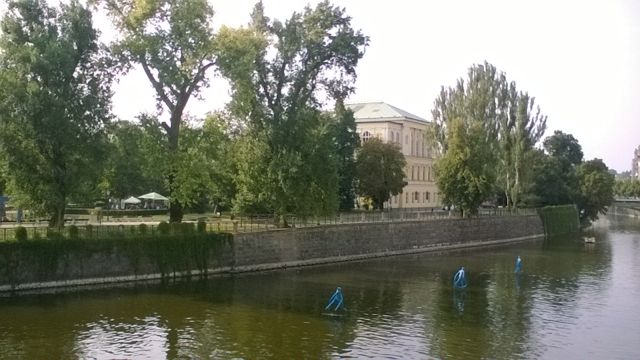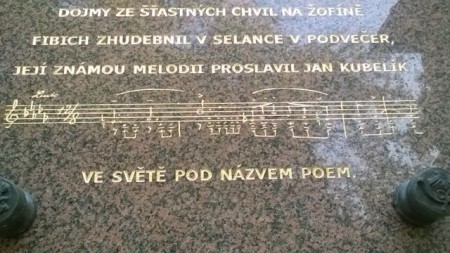
One of the most complicated music references I’ve ever had to research was for a piece that I found on an album called Little Pearls of Czech Classics. The piece was called “Poem” by Zděnek Fibich, and we used it for an adage at the barre in the RAD’s new Advanced 1 in 2013. When I tried to find a piano version of the piece (it was in fact originally a piano piece), it seemed that every time I looked, a new reference would turn up. In the end, I settled for this:
“Večery na Žofině” (Evenings on Žofin) from Moods, Impressions, and Souvenirs Op. 41 No. 139 (originally Op 41 No. 6). Also known as Na Podvečer Op. 39, or Poem [Poème] Op. 39a.
To that, you can now add Op. 41 No. 4, which is the title given to it at AllMusic, where you’ll find a concise history of the piece. For all this numbering, I can’t even remember where I eventually found it – IMSLP have a good selection of FIbich’s works, but not the original piano work (presumably it’s in Volume 4, they only have 1-3). I’d like to think that the memoral slab on the side of the Žofin palace puts one strand of the story literally in stone, which is that it was the Czech violinist Jan Kubelik who made Večery na Žofině (Evenings on Žofin) famous by arranging it for violin, but even that isn’t quite right: to be more precise, Fibich arranged and extended Evenings on Žofin into an orchestral work that he called V podvečer (At Twighlight, Op. 39), from which Kubelik then extracted a bit, arranged it for piano and violin, and called it Poème, whereafter it was catalogued – understandably – as Op. 39a in the list of Fibich’s works.

It was a lovely moment when I realised that this complex history referred to a place that I’d walked past (and on) for so many years on my annual visits to Prague for the International Ballet Masterclasses in Prague. As the Allmusic article tells you, many of the hundreds of piano miniatures in Fibich’s Nálady, dojmy a upomínky (Moods, Impressions and Reminiscences) apparently document the history of Fibich’s late-life love for his one-time pupil Anežka Schulzová (she was 24, he was 42, he was still married to his second wife). There’s barely a part of Schulzovà’s body, or an aspect of their relationship that doesn’t get a musical mention (“Nos. 303-313, however, return to the theme of Anežka’s toes”). As anatomy lessons go, I still think diagrams are probably more reliable.
The more you read about Fibich and Anežka in brief biographies, the greater the sense of misleading moralizing whitewash. Fibich’s first wife died very soon after they married. They had twin children, one of whom died at birth, the other only a few years later. On her death bed, the first wife made her sister Betty promise to marry Fibich, which she dutifully did (or perhaps it was Fibich on whose side the sense of duty lay). It’s hard to imagine how this could last, and hard to begrudge Fibich the unexpected love he found with the much younger Schulzová, an educated woman, expert in Nordic literature, and eventually librettist for Fibich’s later operas. A site about Fibich refers to these years of his life as “fateful love.” The ABRSM, advertising their collection of pieces from Nálady, dojmy a upomínky describe the works as “highly individual miniatures…dedicated to his mistress.” Anežka surely deserves more than this.
Here’s the original orchestral Poème, and further down, a little gallery of pictures from Žofin island, including a view of the National Theatre which you can see from the island. Built between 1868-1881, both Fibich and Schulzová must have spent a long time looking at the building site, and admiring it once it was built from their vantage point on Žofin. The row of impressive buildings on the river bank directly opposite post-dates Fibich’s death I think.













